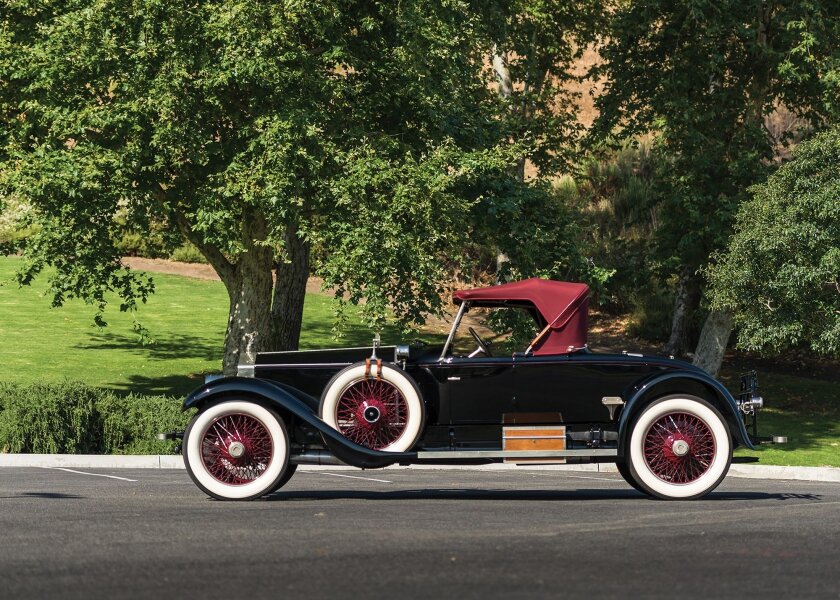Horseless to Horsepower: Gilded and Golden Age Automobiles
February 9, 2019 – July 28, 2019
The early 1900s were a period of fantastic ingenuity; the transition from horse drawn to horseless carriages fueled hundreds of startup brands looking to make an impact in the rising automobile market. The Locomobile Company of America, its name coined from locomotive and automobile, was a pioneering automobile manufacturer in Bridgeport, CT, whose bestselling horseless carriages were equipped with a 3.5 horsepower steam driven engine and tiller steering.
A decade later, in the 1911 Vanderbilt Cup race, William Wallace raced the powerful FIAT Tipo on display. Already, internal combustion engines were becoming ubiquitous, edging out steam and electric powered designs. By the 1920s the modern concept of automobiles was beginning to take form.
With its 491 cubic inch V16 engine, the imposing 1932 Marmon Sixteen produced an impressive 200 horsepower. At 930 pounds assembled, the Marmon engine was relatively light, reportedly enabling the Sixteen to out-accelerate a Duesenberg Model J for roughly a third of the price.
In contrast to large American cars, the British produced the comparatively small 1934 Aston Martin 1½-Litre Mk II Sports. With 80 horsepower at a fraction of the earlier Marmon’s size, the Aston was a quintessential roadster that set the stage for sports cars of the future.
This exhibition highlighted this brilliant time when there was no standard, when grassroots artisans created simply the best of their imagination. From steam power to the smooth and powerful V16 combustion engine, we witness the swift evolution of automobiles in the early 20th Century.




















